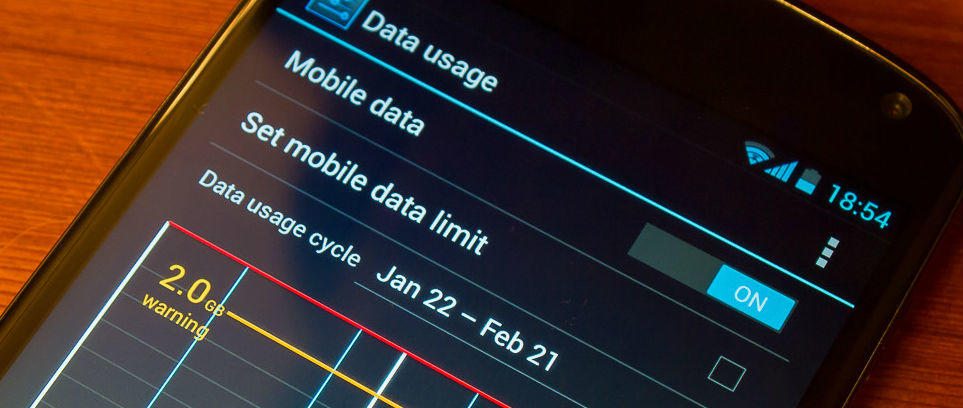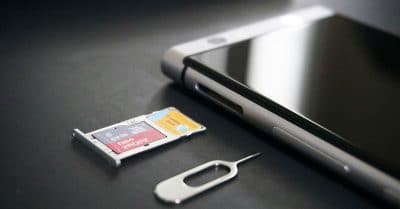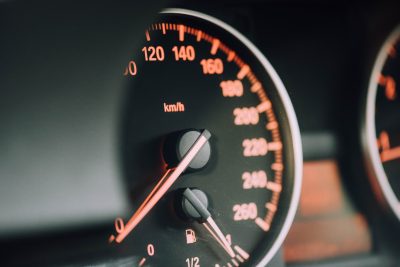How Much Usage Can You Get from 200mb of Data?
Data usage is difficult to estimate as it really depends on what you are doing on your phone but as a guide, if you get 200mb of data per month you should be able to send/receive 1,000 emails (no attachments), send/receive 150 emails with attachments, view around 400 Web pages, and put around 50 photos on social media sites.
Obviously, this is a loose guide, some attachments may be larger, the higher quality video takes more data and some websites will be heavier to download.
The above is a reasonable guide though. If you have a smartphone right now we recommend looking at your bill and seeing how much data you are using at the moment. In terms of price plans at the moment, 200mb is at the lower end of the scale. But if you’re an infrequent user or do most of your smartphone usage via Wi-Fi it could be enough. And the even better news? You can get a SIM card that gives you 200mb of data for free every month!
For some other common data tariffs here's what you can do with their usage allowances:
| 500MB | 1GB | 2GB | 4GB | |
|---|---|---|---|---|
| Accessing Web Pages | 900 web pages | 1,800 web pages | 3,600 web pages | 7,200 web pages |
| Basic e-mail/instant message | 150,000 | 350,000 | 700,000 | 1,400,000 |
| Rich e-mail/IM (with attachments) | 1,000 | 2,000 | 4,000 | 8,000 |
| Downloading/streaming music | 100 songs | 200 songs | 400 songs | 800 songs |
| Downloading/streaming video | 1 hour | 2 hours | 4 hours | 8 hours |
| Skype voice call | 15 hours | 30 hours | 60 hours | 120 hours |
| Skype video call | 2 hours | 4 hours | 8 hours | 16 hours |
| Listening to online radio | 8 hours | 16 hours | 32 hours | 64 hours |
| Downloading/updating apps | 40 apps | 75 apps | 150 apps | 300 apps |
How Much Data Do I Need?
Most of us these days are reliant on our mobiles. And most of us are also on a budget. No one wants to pay more than they have to, which is why getting the right data deal with your contract is important. But just how are you supposed to know how much data you need? We’re here with everything you need to know about mobile data, so keep reading!
Wait, Why is This Important?
Unless you’ve decided to go Pay As You Go, then you’ll need a mobile service contract to get service to your phone. That contract is made up of a monthly limit of calling minutes, text messages, and mobile data. Calling minutes and texts are pretty cheap. In fact, most operators these days offer unlimited minutes and texts on pretty much every contract. The size of your data package is what really makes the cost difference.
If you choose a package that has more data than you need, you’ll be paying for a service you don’t use. If you choose a package with less data than you need, you’ll use up your monthly limit and then need to pay expensive charges for any extra data you use. Neither of these is a good financial plan, which means deciding on the right data limit is essential.
Uh, How Big is Data Exactly?
We usually measure data in gigabytes, or GB. 1 GB is made up of 1000 megabytes, or mb. That doesn’t exactly tell you how ‘big’ data is though. In order for you to get a better idea of the size of data, let’s take a look at 1 GB of data. What exactly can you do with 1 GB?
If you have a 1 GB data limit on your contract this will allow you to:
- Send a million instant messages (over WhatsApp or a similar service)
- Send around 10,000 emails (or post 10,000 Tweets on Twitter)
- Put around 500 pictures on your Facebook wall or Instagram account
- Stream two hours of video from a service like Netflix or Youtube in standard definition (but only one hour if you’re an HD fan)
- Surf the web for about 40 hours
So 1 GB of data is actually kind of a lot for most users, though that’s going to depend heavily on how you use your phone.
Apps and Data Use
Another way to look at data use is by looking at which apps you use most often. Apps are by far the biggest “eater” of data, so having an idea of which apps use the most data should give you an idea of how much data you should be looking for:
- Email: If you’re using Gmail or another email client, you’re barely using any data at all. In fact, email apps use the least amount of data out of all your apps. If you only use your phone for email you can get away with a tiny 100 MB data package and be just fine.
- Instant Messaging: Apps like WhatsApp and Viber also use very little data, as long as you’re only sending messages. However, if you’re sending photos or videos you’ll be looking at a higher data limit.
- Social Media: Social media apps like Facebook, Twitter, Instagram and the like use a relatively small amount of data, though possibly more than you’d think. You’re looking at around 25 mb an hour for each of these apps when you’re actively using them.
- Music Streaming: If you’re a big music streamer using an app like Spotify is going to cost you about 150 mb per hour of use. Google Play Music uses slightly less than this, but you’re still going to need a decent data allowance for music streaming.
- Video Streaming: Video streaming apps like Netflix, Amazon Prime Video, or BBC iPlayer use tons of data, around 1 GB per hour. If you’re a big streamer, you’ll need lots of data.
Choosing Your Data Limit: In General
If you don’t want to mess around with adding up your phone usage hours and deciding where your data is going, you can make a fairly decent guess at what kind of data limit you need by following the below general rules. We’re not guaranteeing that you’ll get the right package (skip to the next section if you want a more specific way of measuring your data), but you shouldn’t be too far out:
- I rarely use my phone, am most often connected to WiFi, send the odd email or two and use instant messaging for messages only: a plan with 250 mb to 500 mb should be fine for you.
- I use my phone’s data for email, Facebook and occasionally other social media, and instant messaging: about 1 GB of data will do.
- I use tons of apps and spend plenty of time on social media: you should be looking for packages with 2 GB of data.
- I use lots of apps, like watching videos sometimes, and am addicted to social media: you probably need around 5 GB of data.
- I love streaming, I stream at least an hour a day of video or audio: you’re going to need between 5 GB and 10 GB of data depending on how much you stream.
- I stream video over 4G at least three days a week for an hour or more: you need at least 10 GB of data.
- I stream video over 4G every day: you’re going to need a solid 20 GB or more data package.
Choosing Your Data Limit: Specifically
If a general guess isn’t good enough for you, then your best bet is going to be monitoring your actual data use for a month or so before deciding which data package to go for. There are four ways that you can go about doing this:
Through Your Phone
Your phone should have a data tracker in it. If you’re on Android go to “Settings” and then “Data” (or perhaps “Data Usage”) and you should find a graph of your data use over time. You can use this to calculate how much data you use in a month. It might be best to look at several months and then average them out. If you’re on iPhone you can do a similar thing by going to “Settings” then “Cellular” then “Cellular Data Usage.”
Through Your Bills
You can also check your old mobile bills which should tell you your complete data use for a month. You can do this with paper bills if you have them, or through your online account with your operator. This is a good way of tracking your past data use and seeing if you’re using more or less over time.
Through Your Operator
Most big operators these days have an app. These apps will usually tell you what your data usage is, as well as giving you a historical overview.
Through an App
Finally, both the Apple Store and the Google Play Store are full of data tracking apps that you can download and use to track your use. There are plenty of free ones so choose one of those, this isn’t really a service worth paying for.
Minimising Your Data Use
Before you actually sign a contract for the amount of data you’ve decided you need, you might first want to think about how you can minimize your data use. Data is expensive, and lowering your data limit is a great way to save money. You also don’t necessarily have to use less data overall. Here are a few ways that you can cut down on data use and opt for a lower limit than you might otherwise need:
- Use WiFi wherever possible. If you’re around a home or office WiFi connection there’s no point in using up your mobile data limit. And some operators, including BT Mobile and O2, give you access to their network of WiFi hotspots when signing a contract. If you live in an urban area these hotspots can mean that you’re almost constantly connected to WiFi without ever needing to switch to mobile data.
- Download rather than stream. Many streaming services, Netflix included, allow you to download content to watch or listen to offline. Downloading your podcasts, music, or shows whilst on WiFi at home can save you tons of data.
- Use 3G rather than 4G. Yes, 4G speeds are faster. But unless you’re streaming HD video then you’re unlikely to notice much difference. And 3G data is generally cheaper than 4G, depending on your operator…
- You can restrict your background data. A lot of apps, including all social media apps, use background data to continuously check for new notifications. If you switch off this background data you’ll use less data overall, though you’ll need to actually open an app before you’ll get any notification. If you’re on Android turning off background data is simple. Go to “Settings” then “Data Usage” and you’ll get a list of all your apps that use data. Simply tap on an app that you want to restrict and then toggle on “Restrict Background Data.” On an iPhone go to “Settings” then “General” then “Background” and toggle off “Background App Refresh.”
- If your use of data isn’t regular, meaning some months you use lots and other months you don’t, then you might want to opt for an operator that lets you add extra data on a monthly basis. O2 allows you to do this, for example, so you can add an extra 1 GB just for months that you need it.
Which Data Plan is Best for Me?
Now that you’ve got an idea of how much data you need, which plan should you be going with? Different operators offer different deals, and these deals are frequently changing. However, we do have some recommendations for you, depending on what your needs are.
Low Usage Plans
If you’re a low usage customer then the best deal out there right now has to be from iD Mobile. They’ll give you 150 calling minutes, unlimited texts, and a 500 mb data limit for just £3.99 per month. Phone service really doesn’t come cheaper than that. There’s really no competition, though if for some reason you don’t want to go with iD, then your next best bet is going to be GiffGaff’s £5 per month package that includes 150 minutes, 500 texts, and 500 mb of data.
Best 1 GB Plans
So, 1 GB is the perfect plan size for you? The good news is that there are plenty of options, with nearly all operators offering a 1 GB data plan SIM only. The cheapest deal is going to be with iD mobile again, where £5 per month gets you 500 calling minutes, unlimited texts and 1 GB of data. Alternatively, Asda Mobile will give you 300 minutes, unlimited texts and 1 GB of data for £7 a month, and Tesco Mobile gives you 500 minutes, 5000 texts and 1 GB of data for £7.50 a month.
Best 2-4 GB Plans
If you’re looking for a little more data, then there are still plenty of options. With iD Mobile you can get 3 GB of data, unlimited texts and 500 minutes for just £8 a month. £10 a month gets you 3 GB of data, unlimited texts and 600 minutes with Asda Mobile, or 3 GB of data and unlimited texts and minutes with GiffGaff (you can bump that up to 4 GB of data for £12 a month). And with Three you can get 4 GB of data and unlimited calling minutes and texts for £11 a month.
Best 5 GB+ Plans
If you’re a medium data user then there are tons of options around. With iD Mobile you can get 6 GB of data, 1000 minutes and unlimited texts for £12.50 a month, or 8 GB and unlimited minutes and texts for £15. GiffGaff will also give you 8 GB of data and unlimited texts and minutes for £15. Vodafone will only give you 5 GB plus unlimited texts and minutes for £15, however, whilst Three will give you 8 GB and unlimited texts and minutes for £16.
Best 10 GB+ Plans
If you need 10 GB or somewhere in that range then the cheapest option is iD Mobile, which gives you 10 GB of data along with unlimited texts and minutes for £13 a month. Tesco Mobile, however, offers a hefty 15 GB of data with 5000 minute and 5000 texts for £15 a month. Vodafone gives you 10 GB and unlimited calls and texts for £17, Three gives you 12 GB and unlimited texts and calls for £18, and O2 gives you 12 GB and unlimited calls and texts for £19 (as well as those free O2 WiFi hotspots).
Best Big Plans
Things get a little more complicated when it comes to big plans, with plenty of price variation. £20 per month will get you 20 GB and unlimited calls and texts with iD Mobile, GiffGaff and Vodafone., but with Tesco Mobile, it will get you 25 GB along with 5000 minutes and 5000 texts. You can get 30 GB of data and unlimited calls and texts for just £17 with Three, or for £25 with O2. £24 per month will get you 40 GB of data and unlimited calls and texts from Vodafone. And finally, if you’re looking for 50 GB of data you can get it for £30 from O2 with unlimited calls and texts, or £35 from Tesco Mobile with 5000 minutes and 5000 texts.
Best Unlimited Plans
If you don’t want to worry about data limits at all then there are a couple of unlimited data options, though they might not be as unlimited as you think. With GiffGaff’s “Always On” package, you get unlimited data, texts and minutes for £25 per month. However, your data speeds will be slowed down once you’ve used 9 GB of data. The only real unlimited plan comes from Three, where you get “all you can eat” data, texts, and minutes for £24 per month.
Best Flexible Plans
Finally, if you’re looking for something a bit more flexible, then you’re best looking at some of the bigger name operators. O2 will let you add extra data as a bolt-on, with 100 mb for £3.50, 500 mb for £6.50, 1 GB for £10.50, and 2 GB for £13.50. Vodafone will let you add an extra 2 GB for £10, but it does auto-renew, so you’ll have to be sure to cancel it once your month is up. GiffGaff won’t give you an add-on, but they do allow you to start using your next month’s limit early (though that could get out of control quite easily). Three allow you to add on extra data, though prices depend on which plan you have, and they also allow you to permanently change your contract to a bigger data one without penalty.
Now all you need to do is choose the right contract for the right price and sign your name! Don’t overpay for data just because you don’t know which phone package is right for you. It might take a little work, but the savings will be worth it.




